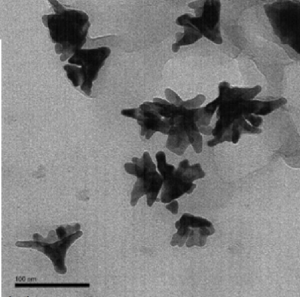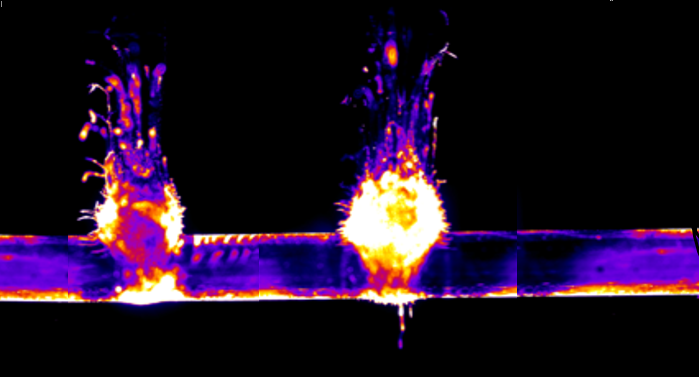Cancer tumors can become surrounded by interstitial fluid, owing to damage of the lymphatic and circulatory systems caused by solid tumors, and is an important point to consider in the fight against cancer. It is important, because such instances of fluid pressure build-up around tumors can impede the deliverance of anti-cancer drugs in a uniform and effective way.
However, it has been shown that when microbubbles–encapsulating anticancer agents–burst in this interstitial fluid, the therapeutic drugs are effectively propelled along “micro jets” against the pressure barrier, and successfully penetrate the tumor. What’s more, the use of ultrasound directed towards the tumor can remotely cause these microbubbles to burst. This process is known as ultrasound-assisted drug delivery.

Research published in Advanced Healthcare Materials shows how using cone-shaped gold nanoparticles, with the help of ultrasound, could enhance the delivery of such vital therapeutics further. This is because the shape of the nanoparticles are able to encapsulate bubbles at the sub-micrometer size. The smaller the bubbles, the more stable they are until they reach their desired target, and are burst by ultrasonic waves. This means they can achieve larger penetration depths into the tumor.
Gold is used as a material due to its biocompatibility, ease of functionalization, one-step synthesis method, and being non-toxic. Furthermore, the gold nanoparticles are stable for at least five days at body temperature, according to in vitro experiments, and upon activation with ultrasound, show fantastic penetration depths.
The authors hope these results could lead to such gold nanoparticles being functionalized with an array of therapeutic macromolecules for fighting cancer. Advantages being that the use of ultrasound is less invasive than other methods of physical stimuli of nanoparticles such as heat or light, and clinically-available ultrasound machines prove to be sufficient to activate these gold nanoparticles.

















